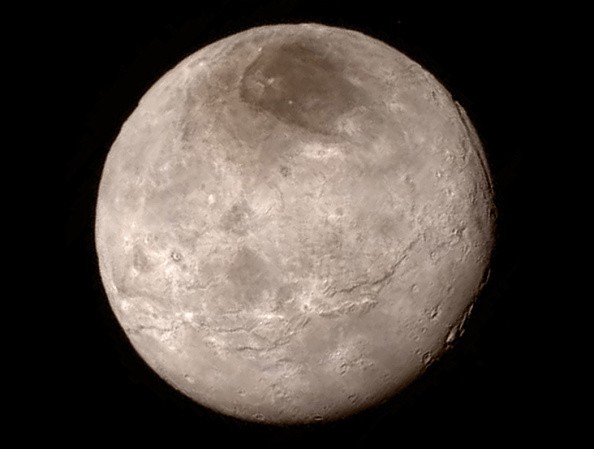New Horizons Next Destination: NASA’s Piano-Sized Spacecraft To Explore Stranger Worlds After Pluto’s Flyby Success
| KJ Belonio | | Jul 18, 2015 08:26 AM EDT |
(Photo : Getty Images/NASA) The New Horizons spacecraft will continue on its route, traveling faster than 30,000 miles per hour based on perpendicular momentum with no fuel required.
Following the success of NASA's New Horizons Pluto flyby mission, many are now wondering where its next destination will be. While Earth finally had a glimpse of its far-flung cosmic cousin Pluto, the vast celestial ocean of the solar system remains to be clandestine.
After its successful exploration of the enigmatic dwarf planet Pluto and its surroundings on July 14, Popular Science noted its mission may not be over yet as experts plan New Horizons' next destination. By travelling past the orbits of several familiar rocky planets and plummeting through the region of the gas giants, NASA's piano-sized aircraft was able to meet the twilight world of the icy dwarf planet in one historic space mission.
Like Us on Facebook
So, what is New Horizons' next destination? For the next 16 months, the spacecraft will send back all the data it has collected around Pluto and its moons over the past few days, USA Today reported. According to the scientists, it takes that long for the spacecraft to send information back to Earth because it can only send data at about 2,000 bits per second. They added the mission's major discoveries are expected to transpire in late 2015 and early 2016.
Since all signs suggest that the spacecraft is in good health, experts are already setting sights on further discoveries. New Horizons principal investigator Alan Stern added the spacecraft has enough power to keep going until mid-2030s, in which the New Horizons will be around 9.3 billion miles away from the sun.
"We have a chance to go further and explore the deep reaches of the heliosphere, like Voyager did, and to do that with much more modern instruments," Stern said.
Meanwhile, the New Horizons spacecraft will continue on its route, traveling faster than 30,000 miles per hour based on perpendicular momentum with no fuel required. By the end of October, it will change its course towards two unnamed targets that are located in the Kuiper Belt, a region of the solar system beyond the known planets.
"Nothing that we can do is going to stop New Horizons from cruising out further into the outer solar system," NASA Science Mission Directorate associate administrator John Grunsfeld said during a press conference.
In other news, scientists have discovered that there are buckyballs, which are soccer-ball-shaped molecules consist of 60 carbon atoms and were named for their resemblance to the geodesic dome designs of Buckminster Fuller, floating around in space.
In the study published in the journal Nature, researchers announced that they had identified strange signals in space, a sign that buckyballs were floating in otherworldly locations.
Tags New Horizons, new horizons spacecraft, NASA, New Horizons Pluto Mission, New Horizons Next Destination
©2015 Chinatopix All rights reserved. Do not reproduce without permission
EDITOR'S PICKS
-

Did the Trump administration just announce plans for a trade war with ‘hostile’ China and Russia?
-

US Senate passes Taiwan travel bill slammed by China
-

As Yan Sihong’s family grieves, here are other Chinese students who went missing abroad. Some have never been found
-

Beijing blasts Western critics who ‘smear China’ with the term sharp power
-

China Envoy Seeks to Defuse Tensions With U.S. as a Trade War Brews
-

Singapore's Deputy PM Provides Bitcoin Vote of Confidence Amid China's Blanket Bans
-

China warns investors over risks in overseas virtual currency trading
-

Chinese government most trustworthy: survey
-

Kashima Antlers On Course For Back-To-Back Titles
MOST POPULAR
LATEST NEWS
Zhou Yongkang: China's Former Security Chief Sentenced to Life in Prison

China's former Chief of the Ministry of Public Security, Zhou Yongkang, has been given a life sentence after he was found guilty of abusing his office, bribery and deliberately ... Full Article
TRENDING STORY

China Pork Prices Expected to Stabilize As The Supplies Recover

Elephone P9000 Smartphone is now on Sale on Amazon India

There's a Big Chance Cliffhangers Won't Still Be Resolved When Grey's Anatomy Season 13 Returns

Supreme Court Ruled on Samsung vs Apple Dispute for Patent Infringement

Microsoft Surface Pro 5 Rumors and Release Date: What is the Latest?










